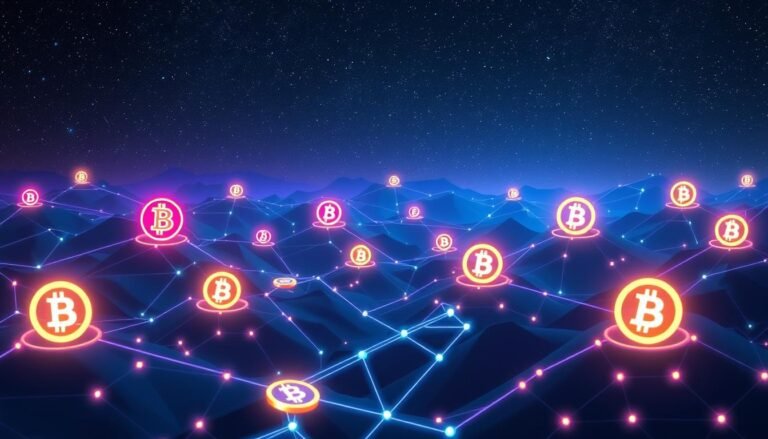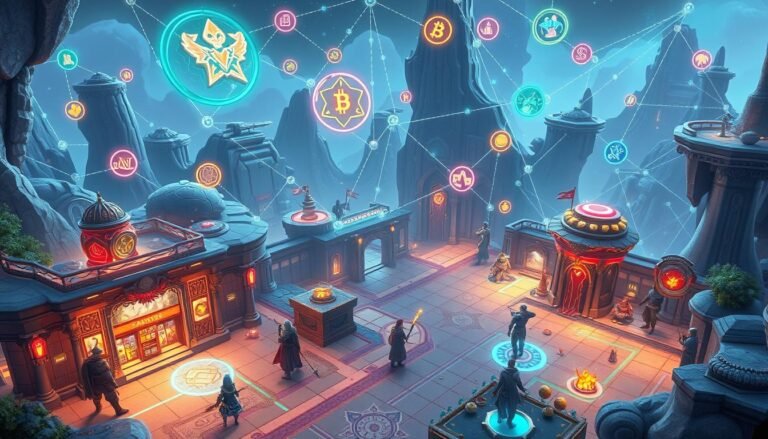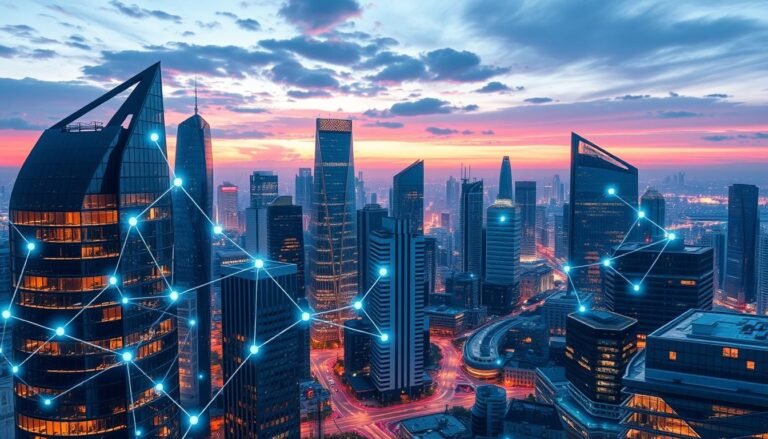Decentralized Social Media Platforms
A new wave of decentralized social media platforms is changing the game. These Decentralized Social Media Platforms, also known as Web3 Social Networks and Blockchain-based Social Media, aim to transform our online interactions. They promise to offer a fresh experience for billions of users around the world.
Over 4.9 billion people use social media daily. But, issues like data breaches and privacy concerns have led many to seek new options. Peer-to-Peer Social Platforms, Federated Social Networks, and Censorship-resistant Social Media are emerging as solutions to these problems.
Blockchain technology is at the core of this revolution. It enables the creation of Crypto Social Networks and Decentralized Content Sharing platforms. These platforms aim to give users more control over their data and a more independent online experience.
Key Takeaways
- Decentralized social media platforms are challenging the dominance of traditional centralized social networks.
- These platforms leverage blockchain and other decentralized technologies to offer users more control over their data and a more autonomous online experience.
- Decentralized social media platforms are exploring new forms of monetization, such as digital currencies, that aim to align with the principles of Sovereign Social Ecosystems.
- Interoperability and federation are key features of these platforms, as they seek to create a Fediverse of interconnected servers and services.
- Decentralized social media platforms are recognized for their focus on meaningful interactions, privacy, and community-driven moderation practices.
Decentralized Social Media: An Introduction
Social media is changing fast, with new ways to connect and share online. Decentralized social media, or DeSo, is leading this change. It uses blockchain and distributed ledgers to give users more control and privacy.
What are Decentralized Social Media Platforms?
These platforms are built differently than old social media. They store data on many nodes, not just one server. This makes them safer from data breaches and censorship.
They use blockchain to create Censorship-resistant Social Media and Crypto Social Networks. Here, users can share freely without a central authority controlling them.
The Decentralized Social Media Platforms market is set to grow big, reaching USD 101.2 billion by 2033. But, they only have about 1% of users now. This means there’s a lot of room for growth.
| Region | Projected Growth Rate |
|---|---|
| United States | High |
| East Asia (China, Japan) | High |
The United States and East Asia, especially China and Japan, will see big growth. As people care more about privacy, Distributed Social Media and Federated Social Networks will become more popular.
Exploring the Dynamics of Centralized and Decentralized Social Media
The social media world has long been ruled by big platforms. These platforms control our data and what we can share. But, a new trend is changing this, offering more privacy and control to users. This shift is making the social media scene very interesting.
Even though decentralized platforms are gaining fans, the big names still have a huge following. In 2023, Facebook, YouTube, and Instagram are expected to have over 2 billion users each. Meanwhile, platforms like Medium and Substack have tens of millions of users. This big difference makes us wonder about the future of social media.
Decentralized platforms are attractive because they tackle privacy and moderation issues. A 2021 Pew Research survey showed that 79% of U.S. social media users worry about data use. These platforms aim to give users more control over their data and reduce censorship risks.
The future of social media will blend centralized and decentralized models. This blend will shape how we communicate online. It will need teamwork from developers, policymakers, and users to overcome challenges. A mix of both models could lead to a fairer and more open internet.
| Centralized Social Media Platforms | Decentralized Social Media Platforms |
|---|---|
|
|
The future of social media will likely be a mix of both centralized and decentralized models. This change will need teamwork to overcome challenges. Together, we can make the internet more open and fair.
“The workshop on decentralized social media brought together a diverse group of leaders and innovators from the decentralized social media sector, highlighting the need for flexible governance structures and adaptable trust and safety measures to maintain decentralization and ethical data use.”
Decentralized Social Media Platforms
Pros and Cons of Decentralized Social Media
Decentralized social media uses blockchain technology. It gives users more control over their data and content. Unlike traditional platforms, these networks let users decide who sees their info, making data safer.
These platforms value privacy and freedom of speech. They don’t follow the same rules as big platforms. Users can earn rewards for sharing good content, encouraging more participation.
But, decentralized social media has its own problems. It’s hard for new users to get into because of its complex tech. It also faces issues with growing too big and dealing with bad content. Plus, figuring out how to follow rules and understanding blockchain can slow things down.
| Pros of Decentralized Social Media | Cons of Decentralized Social Media |
|---|---|
|
|
The web3 world is growing, and so is decentralized social media. These platforms offer more privacy and control. But, they must tackle problems like growing too fast and dealing with bad content. The future of social media might find a balance between decentralization and a good user experience.
Top Decentralized Social Media Networks
The digital world is changing fast, and decentralized social media is leading the way. These new networks give users more power, encourage creativity, and solve big problems like privacy and censorship. They offer a fresh start in the online world.
Mastodon is a big name in this new world. It’s a microblogging site with over 3 million users. It lets users control their data and posts, making it feel like Twitter but better.
Lens Protocol is another key player. It was started by the Aave team. Here, users can create their own NFTs, or digital tokens, to show off their online presence.
Steemit is a true pioneer. It uses its own blockchain to reward users with STEEM tokens for their posts and interactions. It’s a unique way to make social media more rewarding.
| Platform | Monthly Active Users (2023) | Key Features |
|---|---|---|
| Mastodon | Over 3 million | Decentralized microblogging, chronological feed, user control |
| Lens Protocol | Growing user base | Decentralized social graph, Lens handles as NFTs, LensVerse integration |
| Steemit | Tens of millions | Blockchain-based platform, STEEM token rewards |
These networks, along with others, are changing how we use social media. They use blockchain and decentralized tech to give users more privacy and control. This is making social media better for everyone.
Conclusion
Decentralized social media platforms are changing how we interact online. They solve problems that traditional networks face. These platforms use blockchain and decentralized systems.
They give users more control over their data and privacy. People can share freely without fear of being censored.
The shift towards decentralized networks is growing. This change could make a big impact on how we connect and share online. Decentralized platforms are set to change the digital world for billions.
Decentralized Social Media Platforms promise a future with more user control. They offer better privacy and security. People can express themselves freely, without censorship.
As these platforms grow, online interaction will change a lot. This change will empower individuals. It will make the digital world more fair and open.
Source Links
- What You Need to Know About Decentralized Social Networks
- Mastodon – Decentralized social media
- Decentralized Social Media (and What it Means for the Future)
- Unleashing the Power of Decentralized Social Media: The Future of Digital Interaction
- Decentralized Social Media: How the Fediverse Changes Platforms
- Decentralized Social Media Networks: Farcaster and the Future of Web3 Communication
- Liv
- Difference Between Centralized and Decentralize Social Media and Its Future
- Five Themes Discussed at Princeton’s Workshop on Decentralized Social Media
- What is Decentralized Social Media and How Does It Work?
- What is decentralized social media?
- 10 Best Decentralised Social Media in 2024: Maximise Web3 Exposure
- 9 Awesome Decentralized Social Media Platforms for 2023 | BlockSurvey
- List of 86 Web3 Social Media Dapps (2024)
- The future of social networking: Decentralization for user empowerment, privacy, and freedom from…
- Decentralized Social Media: A Game Changer






